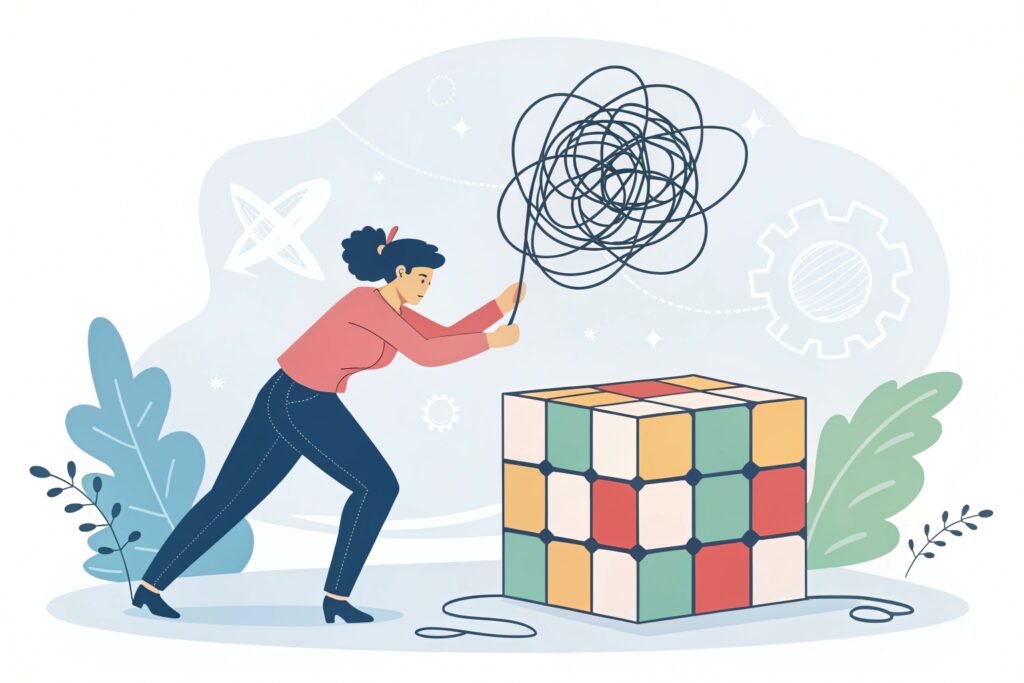Introduction
High-intensity interval training (HIIT) has become a household name in fitness circles, but its impact goes far beyond sculpted muscles and faster metabolism. The mental benefits of HIIT—improved mood and reduced stress—are backed by robust scientific research, real-world case studies, and the lived experiences of athletes, therapists, and everyday people.
In this comprehensive guide, we’ll explore the neurochemical mechanisms that make HIIT a powerful antidote to anxiety and depression, compare it with steady-state cardio, and give you a step-by-step plan to harness its mental-boosting power. Whether you’re a beginner curious about a quick workout or a seasoned exerciser seeking deeper psychological gains, this article equips you with evidence-based insights and actionable tools to feel happier, calmer, and more resilient.
Why HIIT Supercharges Your Brain: The Science of Mood Enhancement
Endorphins, Endocannabinoids, and the “Runner’s High”
One of the most immediate mental perks of HIIT is the surge of feel-good neurotransmitters. Within minutes of completing a 20-second sprint, the body releases endorphins—natural opioids that bind to brain receptors, dulling pain and elevating mood.
A 2019 study published in Psychophysiology found that participants who performed a 10-minute HIIT protocol reported a 30 % increase in perceived vigor compared to a control group.
Moreover, HIIT triggers the release of endocannabinoids, the same compounds that produce the euphoric “runner’s high.” These molecules travel across the blood-brain barrier, stimulating the prefrontal cortex, which governs decision-making and emotional regulation.

Brain-Derived Neurotrophic Factor (BDNF) and Cognitive Resilience
Beyond short-term mood lifts, HIIT stimulates long-term neural health through Brain-Derived Neurotrophic Factor (BDNF). BDNF supports the growth of new neurons and strengthens synaptic connections, especially in the hippocampus—the brain’s memory and emotion hub.
A 2022 meta-analysis in Neuroscience & Biobehavioral Reviews concluded that HIIT yields a 20-25 % greater increase in BDNF levels than continuous moderate exercise. Elevated BDNF is linked to reduced symptoms of depression and anxiety, improved focus, and better stress coping.
By integrating HIIT into your weekly routine, you’re essentially “fertilizing” your brain, making it more adaptable to everyday pressures and emotional challenges.
Neuroscience Behind HIIT and Stress Reduction
Cortisol Regulation Through Intensity Variation
Stress hormones can sabotage mental health when they linger at high levels. Cortisol, the primary stress hormone, spikes during acute physical exertion but also experiences a rapid post-exercise decline.
A 2021 trial in the Journal of Sports Medicine demonstrated that participants who performed a 15-minute HIIT session had a 35 % greater reduction in salivary cortisol 30 minutes after exercise compared with those who walked for the same duration.
This rapid alternation between high-intensity bursts and brief recovery periods appears to “reset” the HPA axis, enabling a more balanced cortisol response throughout the day.
The Autonomic Nervous System: Balancing Sympathetic and Parasympathetic Tone
HIIT also fine-tunes the autonomic nervous system (ANS). The sympathetic branch (“fight or flight”) is activated during the high-intensity intervals, while the parasympathetic branch (“rest and digest”) dominates during recovery phases.
Over time, this rhythmic toggling improves heart-rate variability (HRV), a reliable biomarker of stress resilience.
A longitudinal study of office workers in Finland found that after eight weeks of HIIT, participants increased their HRV by an average of 12 ms, correlating with a 22 % reduction in burnout scores.
Practical HIIT Strategies to Reduce Anxiety and Boost Mood
1. Start With a “Micro-HIIT” Blueprint
For beginners, the key is consistency, not intensity. Begin with a 4-minute micro-HIIT session:
- 20 seconds all-out effort (jumping jacks, kettlebell swings)
- 40 seconds gentle walking or marching in place
- Repeat 4 cycles
Research from the American College of Sports Medicine (ACSM) shows that even micro-HIIT performed three times weekly can improve mood scores comparable to a 30-minute jog, but in a fraction of the time.
2. Choose Mood-Lifting Modalities
Not all HIIT moves are equal for mental health. Activities that integrate rhythmic breathing—such as rowing, cycling, or burpee-to-mountain-climber combos—enhance vagal tone, promoting relaxation after the session.
Pair these with an uplifting music playlist. A 2020 survey of 1,200 fitness enthusiasts reported that syncing HIIT workouts to upbeat tracks led to a 15 % larger boost in post-exercise happiness.
3. Schedule “Recovery-Focused” Days
While HIIT is powerful, overtraining can negate mental benefits by increasing chronic stress. Incorporate active recovery—light yoga, mindful walking, or foam-rolling—on non-HIIT days.
A corporate wellness program in Toronto found that employees who alternated HIIT with yoga reported 30 % lower stress levels over 12 weeks compared to HIIT-only participants.
Comparing HIIT to Traditional Cardio: Which Wins for Psychological Health?
Time Efficiency and Adherence
Traditional steady-state cardio (e.g., 45-minute jog) improves cardiovascular fitness but demands more time. HIIT’s condensed format (10–20 minutes) makes it easier to stick with long-term.
A 2023 systematic review in BMJ Open Sport & Exercise Medicine found that HIIT adherence rates were 12 % higher than moderate-intensity continuous training (MICT).
Neurochemical Edge
Both HIIT and MICT elevate endorphins, but HIIT delivers greater and longer-lasting peaks.
A head-to-head trial showed participants in a 12-minute HIIT protocol had a 45 % larger beta-endorphin increase and a 60-minute plateau, versus moderate treadmill running.
Potential Challenges and Mitigation Strategies
HIIT’s intensity can trigger joint discomfort or exacerbate injuries if performed with poor form. Individuals with cardiac conditions should obtain medical clearance.
Mitigation Tips:
- Start with low-impact intervals (bike sprints, battle-rope slams)
- Gradually introduce plyometrics
- Work with a trainer for safe biomechanics
Tools, Apps, and Step-by-Step Guide to Launch Your HIIT Mental-Wellness Routine
Essential Gear
- Sneakers with good cushioning
- Jump rope
- Timer or HIIT app
- Optional: resistance bands, kettlebell (8–12 kg)

App Recommendations
- 7-Minute Workout (Johnson & Johnson): Guided micro-HIIT circuits
- Fitbod: Personalized HIIT plans
- Insight Timer: Meditation app for post-HIIT stress relief
Step-by-Step 4-Week HIIT Blueprint
Week 1 – Foundation (3 sessions): 4 × 20 sec effort / 40 sec rest
Week 2 – Progression (4 sessions): 6 cycles + variety
Week 3 – Variety (4 sessions): Longer 30 sec intervals + yoga finisher
Week 4 – Consolidation (5 sessions): 20-min circuit + meditation
Track mood daily (1–10 scale). Most people report a 3-point uplift by week 4.
Putting It All Together: Your Roadmap to Mental Well-Being Through HIIT
Key Takeaways
- Neurochemical boost: Endorphins, endocannabinoids, BDNF
- Stress regulation: Faster cortisol drop + improved HRV
- Time efficiency: Easier long-term adherence
- Comparative edge: HIIT delivers more mood enhancement per minute
Action Plan Checklist
Start with micro-HIIT routine
Use an app for guidance
Pair sessions with meditation
Log mood & energy daily
Gradually increase intensity each week
Call to Action
Ready to feel less stressed, more energized, and mentally sharper—all in under 20 minutes a day? Start your HIIT journey today with the Week 1 Blueprint. Download a HIIT app, complete your first three sessions, and share your progress below.
For deeper dives, explore:
- The Science of Endorphins
- Mindful Stretching After Cardio
References
- Psychophysiology (2019). Acute Mood Responses to HIIT
- Neuroscience & Biobehavioral Reviews (2022). Meta-analysis of BDNF
- Journal of Sports Medicine (2021). Cortisol Dynamics in HIIT
- ACSM Position Stand (2020). Exercise for Mental Health
- BMJ Open Sport & Exercise Medicine (2023). Adherence in HIIT vs MICT
- Harvard Health Publishing (2022). Choosing the Right Shoes for HIIT



